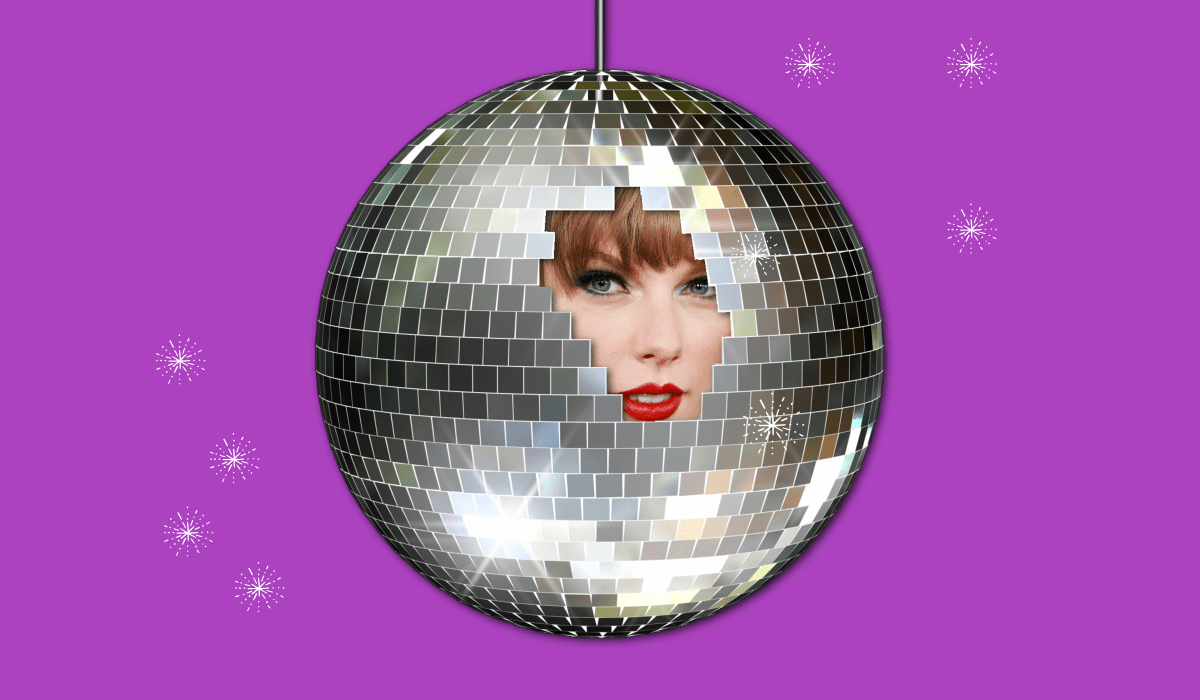
This story was funded by our members. Join Longreads and help us to support more writers.
In 2014, Longreads published its first Taylor Swift reading list, recognizing her (somewhat provocatively, perhaps, for the time) as a music business genius. But how could we have foreseen what the Taylorverse has since become? The past nine years have witnessed new albums, rerecorded “versions,” tours, spats, hookups (musical, romantic, otherwise), missteps, rebounds, the friendships with exes’ exes, and breaking the National Football League.
As the Eras Tour grosses a projected $2.2 billion in North America alone, and the October 27 rerelease of 1989 (Taylor’s Version) approaches, and her soon-to-be-released Eras Tour film is predicted to rock the film industry, Taylor Swift’s genius is no longer a question. She continues to get impossibly bigger, a supernova refusing to stop expanding, gobbling up ever more fans (and ever more money). Swift’s largesse over the last decade—on our devices, in our stadiums, on our screens, at our football games—has made the star even more of an unknowable cypher than ever: how can any of us relate to the champagne problems of a person whose condiment choices go viral? Yet even as Swift’s omnipresence makes her increasingly difficult to see, her brand is built on making us “feel seen,” in what Amanda Petrusich has identified as the star’s “chatty, ersatz intimacy.” She invites identification, but as her monocultural presence grows, this identification becomes ever more challenging, unless we project our own selves onto her. Swift’s artistic output is now entirely separable from Taylor Studies.
This reading list collects pieces from the last decade that use Taylor Swift as a muse, a conduit, a springboard, or a punching bag in service of the authors’ own journeys. They demonstrate how, as Taylor’s Swiftdom grows, so too do the opportunities to use her as a lens through which we can project any number of issues—gender, race, identity, authenticity—and witness the prismatic results, a “kaleidoscope of loud heartbeats under coats,” an easter egg waiting to be unwrapped. She’s a mirrorball, after all, reflecting every version of ourselves.
Listening to Taylor Swift in Prison (Joe Garcia, The New Yorker, September 2023)
Incarcerated for two decades and currently awaiting his first chance at parole, Joe Garcia reflects on how Taylor Swift’s music has accompanied him through the California prison system. As her lyrics provide solace and her voice offers happiness in a hopeless place, Garcia contemplates life beyond prison and what it means to love in broad daylight.
After several months, my belongings, including my CD player, finally caught up with me. I was getting ready to buy “Red” from a catalog of approved CDs when I learned that the California Department of Corrections and Rehabilitation, or C.D.C.R., had placed me on another transfer list. I didn’t want the album to get stuck at the prison after I had been transferred, so I resorted to a country station that regularly featured Swift. Sometimes, hearing Southern drawls and honky-tonk medleys, I’d laugh out loud at myself. But that was the station that played the widest variety of her music, from “Tim McGraw” to “I Knew You Were Trouble.” There was, in her voice, something intuitively pleasant and genuine and good, something that implies happiness or at least the possibility of happiness. When I listened to her music, I felt that I was still part of the world I had left behind.
Lack of Charisma Can Be Comforting (Anna Dorn, Los Angeles Review of Books, August 2023)
For novelist Anna Dorn, Taylor Swift is what you might call a Bitch Eating Crackers. In this essay, Dorn comes to terms with her vitriol for an artist who suffers (in her opinion) from a fatal lack of charisma, and how she’s slowly been won over to the merits, if not the charms, of Swift. Much of that transformation comes down to Dorn recognizing how the things she finds annoying about Swift are also aspects of her own personality: the desire to people-please, the feeling that ultimately she’s not that talented. But ultimately, Dorn recognizes that Swift makes people happy, and that’s not nothing.
I understand how looking at Taylor Swift shows me what I dislike and/or fear about myself. I fear we have the same type of unexceptional, bordering-on-unappealing WASP faces and share a history of throwing ourselves at people with little to no interest in us. We both identify as artists but lack something original to say, instead parroting a variety of inspirational source texts and current pop-cultural trends. Neither of us is supremely talented. Growing up, no one ever told me I was a good writer in a way I doubt anyone outside of Taylor’s family told her she had a good singing voice. Her voice is fine; my writing is fine. Our lack of charisma might be killing us.
Revenge of the Nerds (Taffy Brodesser-Akner, The Paris Review, June 2015)
Once in a class I was teaching, a student highlighted a writer’s choice to use the “passive aggressive voice.” I’ve cherished the slip ever since. Before journalist and fiction writer Taffy Brodesser-Akner penned the definitive celebrity profile on noted Swift ex Tom Hiddleston, she wrote this ode to Taylor Swift’s use of the passive aggressive voice. In her current era, Swift may be rewriting her lyrics to better embody the brand of feminism she now espouses, but Brodesser-Akner’s piece reminds us that Swift’s subtle savageness has always been part of her appeal.
Taylor’s career is, in fact, the perfected realization of every writer’s narrowest dream: To get back at those who had wronged us, sharply and loudly, and then to be able to cry innocent that our intentions were anything other than poetic and pure. Most of us can only achieve this with small asides. Taylor not only publicly dates and publicly breaks up, but she then releases an achingly specific song about the relationship—and that song has an unforgettable hook—all the while swearing she won’t talk about relationships that are over. Yes, date Taylor Swift, and not only will she shit on you on her album, but the song will become a single, then a hit, and then you will hear yourself shat upon by an army of young women at Staples Center. And then she’ll deny that she was ever doing anything other than righteously manifesting her art. It’s diabolical, and for a lifelong passive-aggressive like me, it’s made her my hero.
On Loving Taylor Swift While Being Brown (Vrinda Jagota, Pitchfork, November 2017)
This thoughtful piece by Vrinda Jagota, written the year after Donald Trump was elected U.S. president and the year before Taylor Swift first endorsed Democratic candidates in her adopted home of Tennessee, explores how Swift has benefitted from and weaponized whiteness. While the pop star has come a long way since her post-Trump tentative steps toward political outness, Jagota’s readings of Swift’s public feuds with Black artists and blue-eyed-loving lyrics remain instructive, particularly when her paramours are racist assclowns.
Each of these missteps has left me dubious not only of Swift’s brand of white feminism, but of the relatable vulnerability for which she is known. It’s alienating, not relatable, that even when faced with what appears to be an absurd accusation of neo-Nazi ties, Swift has shown an unwillingness to condemn the racists who adore her. It reminds me of how different our lived experiences are. Like all people of color, I don’t have Swift’s privilege of remaining quiet and thus neutral about white supremacy, particularly at this tense moment in time. Swift’s seeming indifference to the struggles of people of color has also led me to revisit her music—to wrestle with how it affected my teenaged understanding of femininity, and how her music may continue to influence young fans of color.
The Unbearable Whiteness of Taylor Swift’s Fandom (Jenna Mahale, Mic, December 2021)
Bops and brilliant albums aside, Taylor Swift has galvanized 21st-century fan culture, and that has been one of the most remarkable features of her hyperbolically remarkable career. But what happens if you don’t see yourself represented within that culture? This piece, which picks up where Jagota’s essay leaves off, outlines a history of white conservatism within Swift’s fan community. Mahale notes how Swift’s insistence on emotional intimacy in her songs and her interactions with fans heightens fans’ own parasocial feelings toward the singer—and their willingness to “defend” her at any cost.
Zoya Raza-Sheikh, a 24-year-old British Pakistani fan of Swift, finds that the extreme online behavior she’s witnessed as a Swiftie has alienated her from the fandom, particularly as someone who identifies as pansexual. For her part, Swift has been a vocal supporter of LGBTQ causes since her political “coming out.” “Rights are being stripped from basically everyone who isn’t a straight white cisgender male,” she told Vogue in 2019. “I didn’t realize until recently that I could advocate for a community that I’m not a part of.” Unfortunately, this message hasn’t reached some of her most fervent fans.
Pleasure-y Guilt (Jay Jolles, Avidly, May 2021)
In this brief and arresting piece, Jay Jolles charts his affection for Taylor Swift in relation to broad questions about gender, queerness, and feeling. For Jolles, it’s Swift’s unerring commitment to raw emotion that results in guilt when it comes into contact with white masculinity. As a trans man, Jolles teases apart the ironies and complications of being a male Swiftie.
I have learned — having always been a Swiftie, but still very much in the process of apprehending masculinity — that many men worry about whether or liking Taylor Swift transcends a guilty pleasure and is instead indicative of some greater underlying thing — not a guilty pleasure but just a guilt. A quick perusal of the r/TaylorSwift community boasts many threads on the subject: am I [gay? weird? creepy?] for being a 34 year old straight white male who loves Taylor Swift? Will my girlfriend think it’s odd that I like Taylor Swift? Is it okay for me (38/M) to take my daughter to a Taylor Swift concert?
What this line of thinking evinces for me is not only that my fellow male Swifties are worried about what a potential like (or even love) of Taylor Swift’s music might mean, but that there is an element of guilt deeply imbricated within our understandings of taste and how they relate to a perceived type of manhood. The irony here is that I would argue that Swift herself is often crossing, if not blurring, the gender binary in her writing; not only when she is changing the pronouns in her songs. I think that this is in large part why her work is as legible to me as a twenty-eight year old man as it was to me as a fifteen year old girl.
Jill Spivey Caddell is a writer and teacher of U.S. literature, arts, and culture. She lives in the mountains of Virginia.
Editor: Krista Stevens
Copyeditor: Cheri Lucas Rowlands






 Get the Longreads Weekly Email
Get the Longreads Weekly Email